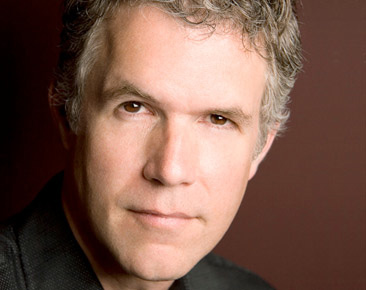
 This being peach season in the south, my original plan for this week was to write a column about the use of peaches in bluegrass lyrics through the years (as in, “You don’t like my peaches, don’t shake my tree,” etc.). However, my article last week on changes in the delivery and purchase (or not) of recorded music seems to have generated a lot of discussion, so I thought some followup might be in order, to possibly clear up some misunderstandings, delve further into some aspects of the subject, and maybe make a completely different set of people mad at me (one gets so tired of the same angry people all the time).
This being peach season in the south, my original plan for this week was to write a column about the use of peaches in bluegrass lyrics through the years (as in, “You don’t like my peaches, don’t shake my tree,” etc.). However, my article last week on changes in the delivery and purchase (or not) of recorded music seems to have generated a lot of discussion, so I thought some followup might be in order, to possibly clear up some misunderstandings, delve further into some aspects of the subject, and maybe make a completely different set of people mad at me (one gets so tired of the same angry people all the time).
There seems to be some confusion about the difference between downloading music through iTunes, Amazon, or other outlets for downloadable music, and subscribing to digital music streaming services like Spotify and Pandora.
When songs are downloaded, you’re specifically paying for that artist’s song. The seller will get a pretty decent cut, just like a retailer, the record label will make some money, and the artist at least has a chance of getting something too. You then have it on your computer and/or mp3 player/phone, and you can listen to it all you want (if you burn it on to a CD or email it to all your friends, I will send a certain large fiddle-playing professional wrestler friend of mine nicknamed “The Brick” to come visit you).
Digital streaming services are a different story. They are more like radio stations that you control the programming of, all for free. In the case of Pandora, you can pay a very small subscription fee to avoid all commercials.
As with chemical fertilizer, facelifts, 24-hour a day cable news channels, and other scientific advances, this seemed like a wonderful idea, but it came with some serious consequences: unlike a traditional radio station, or even satellite radio, which offers channels devoted to specific genres of music (like you-know-what!), you can hear nothing but the artists and songs that you like, when you want to hear them. Along the way, you have the opportunity to discover new artists, then listen to all of their music when you want for free, too.
Congratulations! You’re the program director. You know one thing that’s great about being a program director? You never have to purchase music, because you get all you want (and lots that you don’t) for free!
That is the huge difference between these services and terrestrial or satellite radio. If I happen to hear a song I really like on the radio by a specific artist, I’ll want to find out who it is, and where I can purchase the whole album. If there is an on-air host (ahem!), maybe he or she will actually tell me. On a streaming service, I just have instant access to all that artist’s available work to listen to whenever the mood strikes.
Since this form of music delivery obviously eliminates the incentive to purchase music, it’s good they have a system in place to compensate the artists and labels, and pay for the use of the intellectual property of the songwriters.
What?! They don’t??! Well, in theory they do, but the amounts, as mentioned last week, are so tiny, most artists who aren’t Katy Perry would just as soon get a small fruit basket at the end of the year instead (one orange and a chocolate bar). That would be about 5 times the value of the average bluegrass artist’s royalty totals for the year (and way more festive).
It should be added for clarity that terrestrial radio has compensated writers and publishers of the music fairly for years, and satellite radio also compensates the artists and labels fairly, in addition to paying writers and publishers through BMI, ASCAP, SESAC, etc.
In the course of the discussion last week, some people said they enjoy the digital streaming services but that they also make sure to buy the artists’ music too. That’s certainly laudable; it really amounts to a conscientious charitable contribution. The percentage of people doing that, however, is about 1.5% (I made that statistic up, but I’ll bet it isn’t far off).
Clearly, we on the production side of the music have a big problem, and it’s not clear how to solve it, except at this point through education.
I thought, for reference sake, I would list the ways to obtain a recording artist’s music, in order of the artist’s preference, with “1” being the ideal and “10” being the worst case scenario:
- (usually in heaven only) A CD is purchased directly from the artist, handing him or her exact change in unmarked five dollar bills. The purchase is followed by a compliment of the artist’s hair.
- A CD is purchased directly from the artist using any traditional method of payment (“traditional” not referring to bartering with acorn squash or moonshine).
- The music is purchased from the artist’s own web site. This way, whether or not the artist is on a record label, he or she will receive the full amount of the purchase, after cost of the product and shipping expense.
- Downloading the music from a legitimate music retailer (what the artist receives from this depends on whether it’s self-released, or, if they’re with a label, what their digital royalty arrangement is).
- Purchasing a CD from a legitimate on line retailer. Note: here there’s a big difference between a self-released project and one released with a record label, and a customer shouldn’t be expected to know the difference: if the artist released it on his/her own label, they’ll receive the price of the purchase, minus the site’s fairly large commission. If the music was released by a record label, the artist will most likely receive nothing from that sale, or up to around $1.00. That’s why this is number 5, rather than number 4.
- Listening to a digital streaming service but still occasionally buying a CD you really thought was special or as a gift (to go in that year-end gift basket).
- Purchasing a CD from any source, then burning it for friends and family (remember “The Brick,” he’s coming for you!)
- Listening to a digital streaming service and never buying or downloading another song or album ever again.
- Stealing CDs off your table when you’re engaged in conversation with another fan (that you may have paid off, just for that purpose).
- Listening to a digital streaming service, and stealing a CD off your table after punching you in the face (bonus points for also taping your show).
Feel free to share, enlarge, and post on merchandise tables everywhere.




